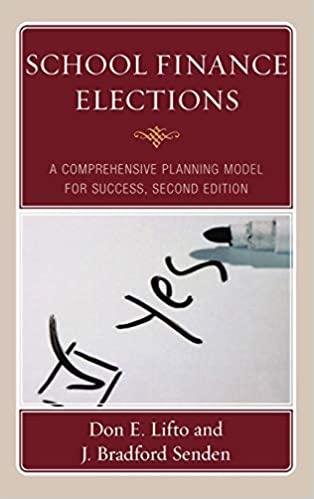Question
Mulbahs corporation was considering the introduction of a new product that was expected to reach sales of $10 million in its first full year, and
Mulbahs corporation was considering the introduction of a new product that was expected to reach sales of $10 million in its first full year, and $13 million of sales in the second year. Because of intense competition and rapid product obsolescence, sales of the new product were expected to remain unchanged between the second and third years following introduction. Thereafter, annual sales were expected to decline to two-thirds of peak annual sales in the fourth year, and one-third of peak sales in the fifth year. No material levels of revenues or expenses associated with the new product were expected after five years of sales. Based on past experience, cost of sales for the new product were expected to be 60% of total annual sales revenue during each year of its life cycle. Selling, general, and administrative expenses were expected to be 23.5% of total annual sales. Taxes on profits generated by the new product would be paid at a 40% rate.
To lunch the new product, Mulbahs corporation would have to incur immediate cash outlays of two types. First, it would have to invest $500,000 in specialized new production equipment. This capital investment would be fully depreciated on a straight-line basis over the five-year anticipated life cycle of the new product. It was not expected to have any material salvage value at the end of its depreciable life. No further fixed capital expenditures were required after the initial purchase of equipment.
Second, additional investment in net working capital to support sales would have to be made. Mulbahs corporation generally required 27 cents of net working capital to support each dollar of sales. As a practical matter, this buildup would have to be made by the beginning of the sales year in question (or, equivalently, by the end of the previous year). As sales grew, further investments in net working capital ahead of sales would have to be made. As sales diminished, net working capital would be liquidated and cash recovered. At the end of the new products life cycle, all remaining net working capital would be liquidated and the cash recovered. Finally, Mulbahs corporation expected to incur tax-deductible introductory expenses of $200,000 in the first year of the new products sales. These costs would not be recurring over the products life cycle. Approximately $1.0 million had already been spent developing and test marketing the new product. These expenditures were also one-time expenses that would not be recurring during the new products life cycle.
A) Estimate the new products future sales, profits, and cash flows throughout its five-year life cycle.
B) Assuming a 20% discount rate, what is the products net present value? What is the internal rate of return?
C) Should Mulbahs corporation introduce the new product?
Step by Step Solution
There are 3 Steps involved in it
Step: 1

Get Instant Access to Expert-Tailored Solutions
See step-by-step solutions with expert insights and AI powered tools for academic success
Step: 2

Step: 3

Ace Your Homework with AI
Get the answers you need in no time with our AI-driven, step-by-step assistance
Get Started


